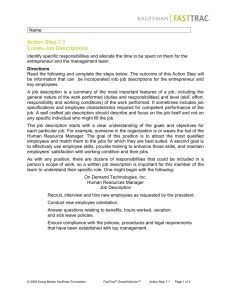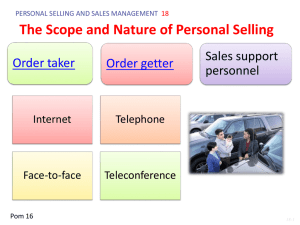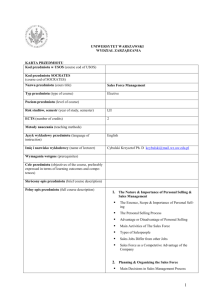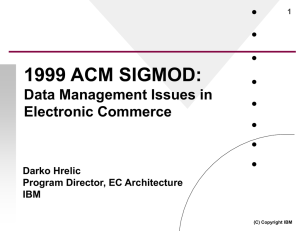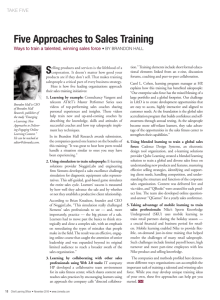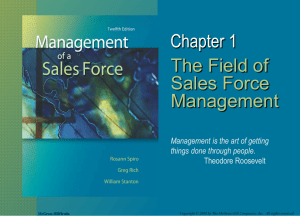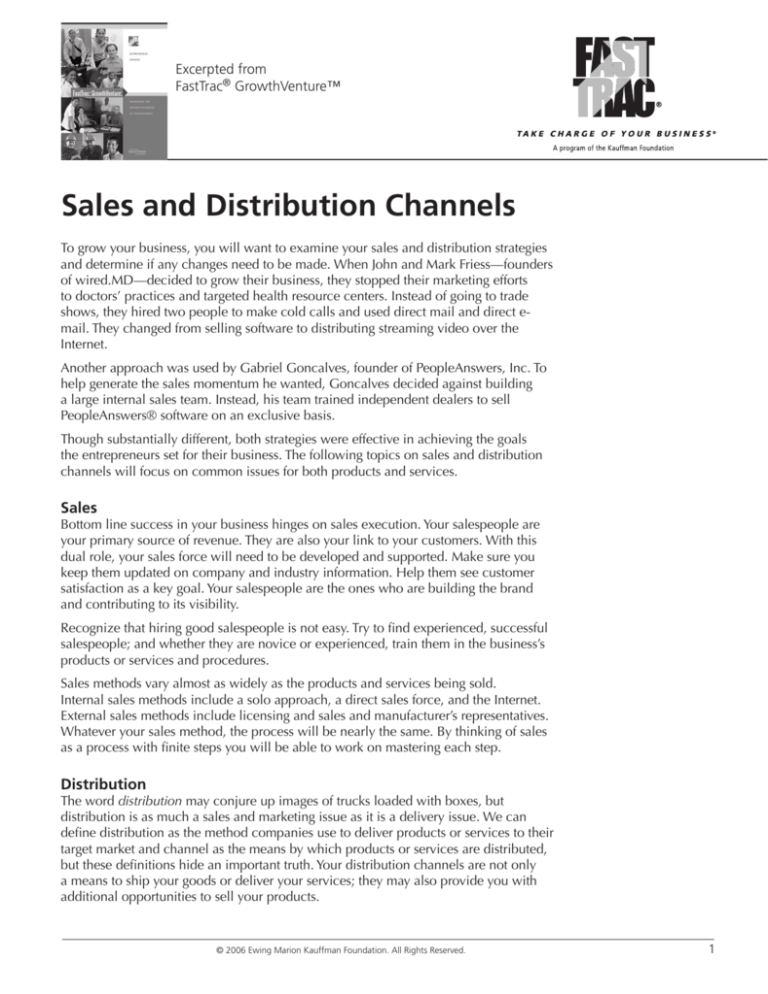
Excerpted from
FastTrac® GrowthVenture™
Sales and Distribution Channels
To grow your business, you will want to examine your sales and distribution strategies
and determine if any changes need to be made. When John and Mark Friess—founders
of wired.MD—decided to grow their business, they stopped their marketing efforts
to doctors’ practices and targeted health resource centers. Instead of going to trade
shows, they hired two people to make cold calls and used direct mail and direct email. They changed from selling software to distributing streaming video over the
Internet.
Another approach was used by Gabriel Goncalves, founder of PeopleAnswers, Inc. To
help generate the sales momentum he wanted, Goncalves decided against building
a large internal sales team. Instead, his team trained independent dealers to sell
PeopleAnswers® software on an exclusive basis.
Though substantially different, both strategies were effective in achieving the goals
the entrepreneurs set for their business. The following topics on sales and distribution
channels will focus on common issues for both products and services.
Sales
Bottom line success in your business hinges on sales execution. Your salespeople are
your primary source of revenue. They are also your link to your customers. With this
dual role, your sales force will need to be developed and supported. Make sure you
keep them updated on company and industry information. Help them see customer
satisfaction as a key goal. Your salespeople are the ones who are building the brand
and contributing to its visibility.
Recognize that hiring good salespeople is not easy. Try to find experienced, successful
salespeople; and whether they are novice or experienced, train them in the business’s
products or services and procedures.
Sales methods vary almost as widely as the products and services being sold.
Internal sales methods include a solo approach, a direct sales force, and the Internet.
External sales methods include licensing and sales and manufacturer’s representatives.
Whatever your sales method, the process will be nearly the same. By thinking of sales
as a process with finite steps you will be able to work on mastering each step.
Distribution
The word distribution may conjure up images of trucks loaded with boxes, but
distribution is as much a sales and marketing issue as it is a delivery issue. We can
define distribution as the method companies use to deliver products or services to their
target market and channel as the means by which products or services are distributed,
but these definitions hide an important truth. Your distribution channels are not only
a means to ship your goods or deliver your services; they may also provide you with
additional opportunities to sell your products.
© 2006 Ewing Marion Kauffman Foundation. All Rights Reserved.
Sales and Distribution Channels
Taking Action
Let’s face it, products and services don’t typically sell themselves. At a very basic level,
sales happen when you:
1.Make an effort to get a customer’s attention.
2.Help that customer see the value of the product or service.
3.Make the customer feel comfortable that the seller can be trusted.
4.Make it easy for the customer to pay.
5.Ensure that the customer has a way to receive the goods or services.
All five of these activities are essential, and all involve skill and effort.
You and your employees can do all these things yourself, but to grow beyond your current
capacity you’re going to need help. Distribution channels can provide you with that help.
New Distribution Opportunities
The type of distribution channel you use depends on your industry, type of products or
services, and business model. In the past, distribution channels were largely standardized
by industries which left entrepreneurs with a limited number of methods for getting their
products or services to their intended audience. For example,
clothing manufacturers traditionally sold their goods through department stores.
Now manufacturers can sell their clothing through various types of retail entities and over
the Internet.
Examples of turbulence that can affect distribution are everywhere. Newspapers
are cutting staff because advertisers are moving to the Internet. Software-development
houses are shutting down because programmers in Bangalore, India can do the
work for a fourth of the cost. Life insurance companies are being forced to change
their pricing and sales tactics as low-cost term-life policies are sold as commodities
on the Internet.
New business models can be risky, but for many companies they are paying
dividends. Amazon.com competes with local and on-the-ground chain books stores.
Sit4Less.com® sells chairs direct to consumers. Small mom-and-pop manufacturers
like SunGoldSoap.com sell their products over the Internet. Even the U.S. Postal
Service sells stamps online through Stamps.com®.
The point is that there are new and evolving opportunities for you and your company.
If you’re serious about growth, you’ll be serious about investigating your distribution
alternatives. Remember: challenges to your business don’t just come from your traditional
competitors. The most dangerous threats often come from new start-ups who take
advantage of cataclysmic changes in business infrastructure—like those happening today
in distribution channels.
The chart below illustrates the most common distribution channels used by businesses
over the past decade.
Retail
o
o
o
o
o
o
o
o
Mass merchandise
Discount
Off-price
Department stores
Specialty shops
Chain stores
Direct mail
Internet
Packaged Goods
o Chain grocery stores
o Independent grocery
stores
o Mass merchandisers
o Specialty stores
o Convenience stores
o Independent reps
o Internet
Business to Business
o
o
o
o
Direct sales
Wholesalers
Distributors
Internet
© 2006 Ewing Marion Kauffman Foundation. All Rights Reserved.
Service
oCompany-owned
offices
o Franchises
o Dealerships
oTelevision programs
and infomercials
o Internet

